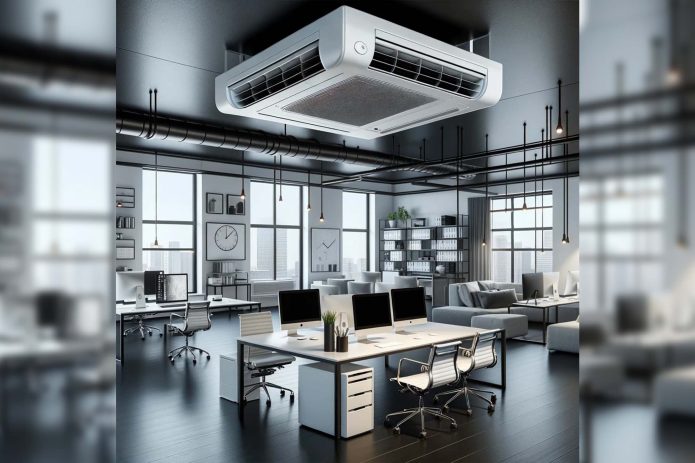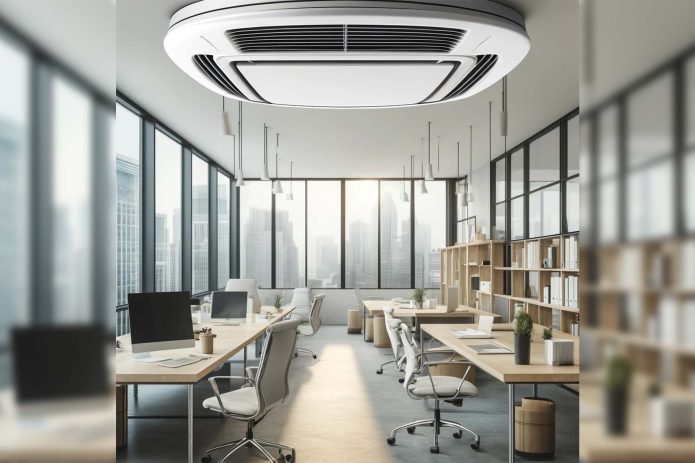Rishabh Mishra, Director of Cruise Electric, states that the fan coil unit market is projected to grow 7-10 percent annually due to sustainable building solutions. He emphasises their commitment to sustainability and operational excellence. Mishra highlights the energy efficiency of chilled water fan coil units and their alignment with global ESG goals, positioning Cruise Electric as a leader in decarbonisation.
India’s Fan Coil Unit market is experiencing substantial growth, driven by increasing demand for energy-efficient heating and cooling systems solutions. This market is projected to expand at a Compound Annual Growth Rate (CAGR) of around 7 to 10 per cent over the coming years, reflecting a global trend towards more sustainable building technologies. In terms of market size, the Global fan coil unit market (FCU) is valued at approximately USD 7.16 billion in 2023-24. It is anticipated to rise to about USD 10.99 billion by 2030. This growth indicates increasing FCU installation of FCUs across various sectors, including residential, commercial, and industrial spaces, because of their energy efficiency and cost-effectiveness.
Chilled water fan coil units (FCUs) benefit significantly from the focus on Environmental, Social, and Governance (ESG) criteria and decarbonisation efforts due to their operational efficiencies and sustainability features. Below are more detailed figures that highlight the advantages of fan coil units.
Energy savings: Chilled water FCUs can reduce energy usage by up to 40-50 percent compared to traditional direct expansion systems. This is crucial in commercial building environments, where HVAC systems can account for approximately 40 percent of total energy consumption.
Carbon emission reduction: Chilled water FCUs help decrease a building’s overall carbon emissions by improving energy efficiency. For instance, switching to chilled water systems in a standard commercial building could reduce CO2 emissions by thousands of kilograms annually, supporting efforts to meet global CO2 reduction targets of 55 per cent by 2030.
Compliance and incentives: With increasing regulatory pressures, such as the Paris Agreement targets, buildings must adhere to stricter energy codes. Chilled water FCUs help achieve these standards, making buildings eligible for green certifications like LEED or BREEAM, which can further increase their market share.
Integration with Renewable Energy: Chilled water systems can be effectively paired with renewable energy sources, potentially reducing grid energy dependence by up to 70 per cent. It is particularly effective in regions with high solar availability, contributing to a building’s energy independence and resilience.
Lifecycle cost efficiency: Although the initial setup cost of chilled water FCUs can be higher, the return on investment is rapid due to the significant reductions in operational costs. Over a 15-20 year lifespan, total cost savings can range from 25-30 per cent compared to conventional systems.
Market growth: The global market for chilled water FCUs is expected to grow at a CAGR of around 7 per cent over the next decade, driven by heightened environmental concerns and the push towards sustainability.
These figures demonstrate the financial and environmental value of adopting chilled water FCUs, aligning with ESG and decarbonisation strategies that are increasingly important to stakeholders and regulatory bodies worldwide. Chilled water systems and Variable Refrigerant Flow (VRF) systems have advantages and are suited to different applications.

Advantages of chilled water systems over VRF systems
Chilled water systems offer high efficiency for large-scale applications, particularly in expansive buildings or campus environments. It is attributed to their centralised chilling mechanism, where chilled water is produced centrally and distributed across multiple areas. Furthermore, modern chillers typically boast higher Coefficient of Performance (COP) values when compared to Variable Refrigerant Flow (VRF) systems, which is particularly evident in large operations.
The energy efficiency of chilled water systems stems from water’s remarkable thermal properties. With its high heat capacity, water facilitates the efficient transfer of heat over considerable distances, ensuring minimal energy loss. This characteristic enables chilled water systems to sustain high levels of efficiency even across extensive piping networks, making them suitable for large buildings.
Zonal control and flexibility are key features of chilled water systems. With individual control capability for each Fan Coil Unit (FCU), these systems enable precise temperature regulation in various zones while maintaining efficiency. Additionally, chilled water systems offer scalability to accommodate future expansion needs.
Chilled water systems offer multiple advantages that contribute to their widespread adoption. By utilising water as the primary heat transfer medium, these systems reduce the need for refrigerants, thus mitigating environmental risks associated with refrigerant use.
Their centralised chillers and system components tend to have longer lifespans and are designed for durability and heavy-duty use, leading to potentially lower lifecycle costs. Additionally, chilled water systems exhibit versatility, making them suitable for diverse climates, including hot and humid conditions where dehumidification is crucial. Additionally, Chilled water systems can be integrated with other HVAC systems like heating and domestic hot water production, allowing for efficient heat recovery and reuse.
Maintenance is streamlined through centralised management at the chiller plant, making it easier to manage and service than maintaining multiple VRF units spread throughout a building. Centralised chiller plants should be positioned away from occupied spaces, reducing noise levels within the building compared to multiple VRF units closer to occupied areas. Lastly, chilled water systems offer flexibility in design and can be customised to meet specific building requirements, including integration with existing systems.

Application considerations
While chilled water systems offer these advantages, they are typically more suitable for large buildings, industrial applications, and campuses where centralised cooling can be distributed efficiently. For smaller buildings or spaces with varying load demands, VRF systems may offer more flexibility, lower initial costs, and ease of installation.
Conclusively, the choice between chilled water systems and VRF systems should be based on factors such as building size, cooling load, energy efficiency goals, initial costs, maintenance considerations, and application needs.
Cookie Consent
We use cookies to personalize your experience. By continuing to visit this website you agree to our Terms & Conditions, Privacy Policy and Cookie Policy.












